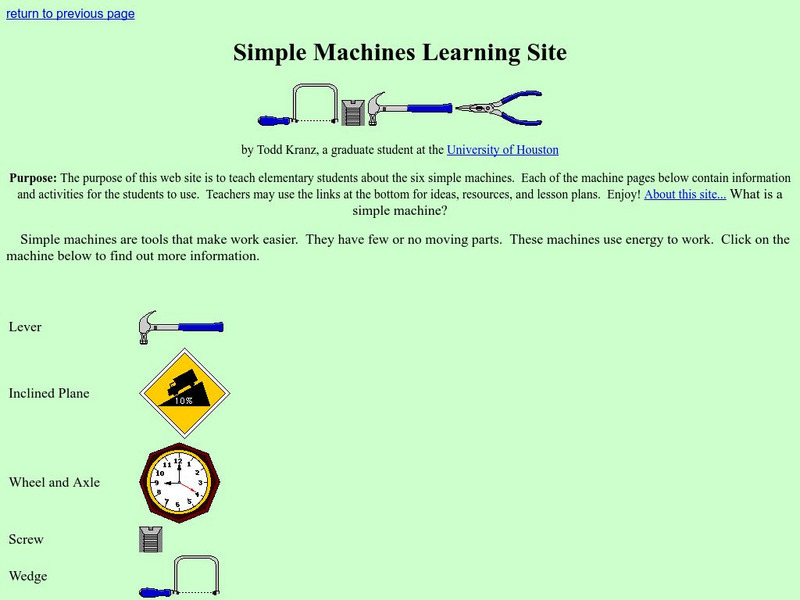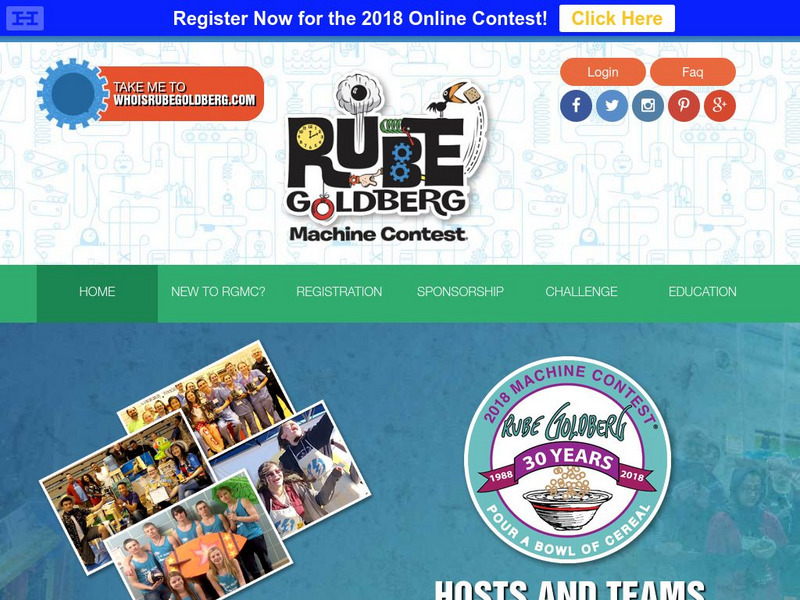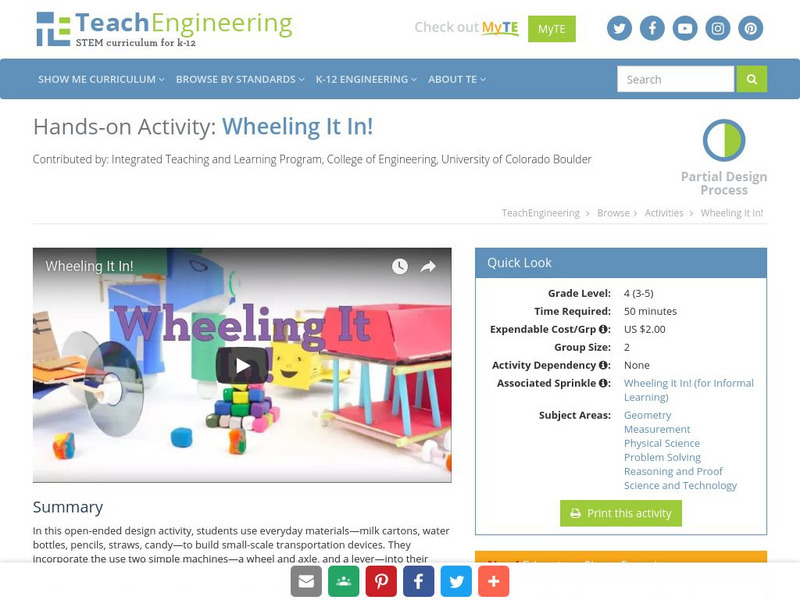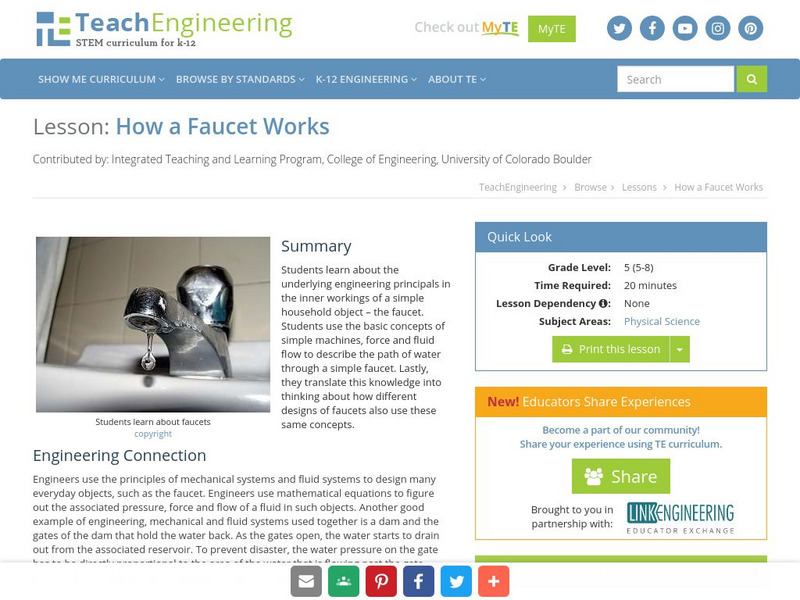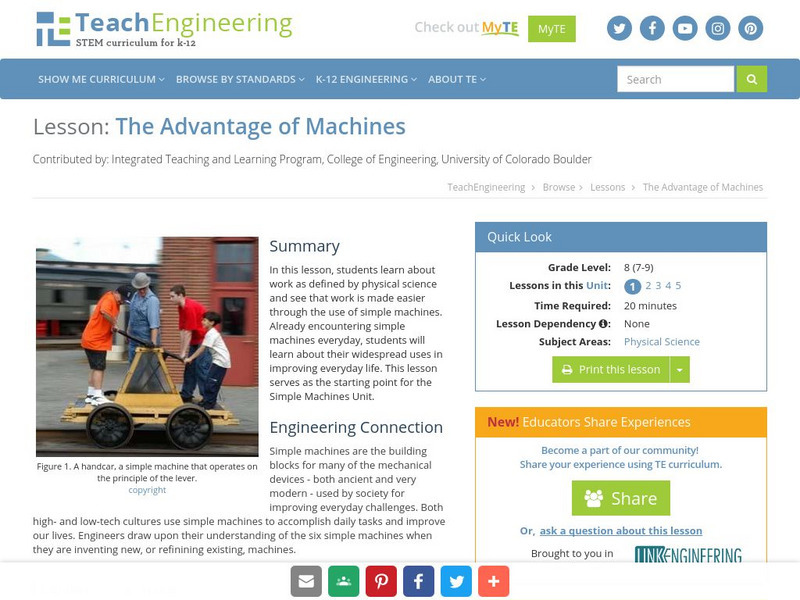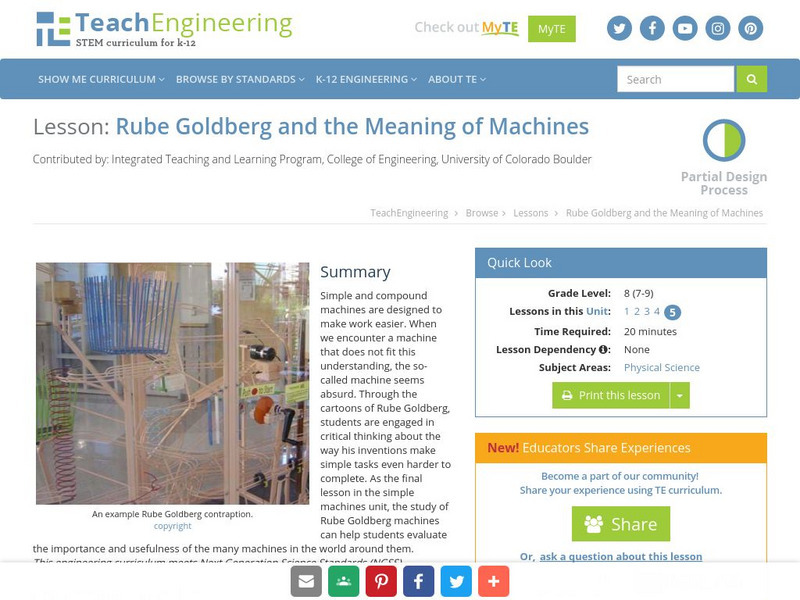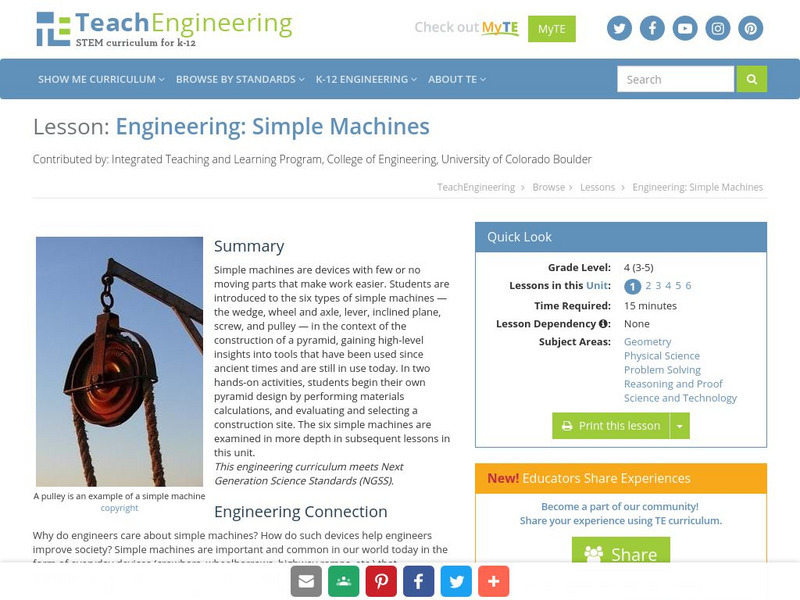Hi, what do you want to do?
Beacon Learning Center
Beacon Learning Center: How Can We Move Our Principal?
In this problem solving exercise, students must decide which simple machine would work best in different situations, in order to help the principal manoeuvre himself after he has hurt his leg and can't walk. The site has a good tutorial...
SRI International
Performance Assessment Links in Science: Some of Its Parts
As they examine two variations of a can opener, young scholars will discuss what the purpose is of each of its sub-parts, and which of the can openers is the better machine. They will also suggest improvements to the can opener. This is...
Ohio State University
Ohio State Univ.: Simple Machines & Mechanical Advantage [Pdf]
This site details how simple machines create a mechanical advantage for humans. Levers, theoretical mechanical advantage, actual mechanical advantage, and pulley systems are discussed.
American Association of Physics Teachers
Com Padre Digital Library: Open Source Physics: Sliding Down an Incline Plane
Here is a simulation demonstrating an object placed on an inclined plane. The user will vary the slope of the plane to see the relationship the slope has on the gravity of the object and the static friction.
Math Science Nucleus
I. Science Ma Te: Integrating Science, Math and Technology
This site offers a wealth of online textbook-related materials that encourage the discovery of science in the world around us. Enter the site to access material on specific topics. Each section contains reading material (complete with...
The Franklin Institute
Franklin Institute Online: Simple Machines
Information on all six simple machines, nicely presented with extra information available for all. Other sources available. Do "Try This Demonstration."
Museum of Science
Museum of Science and Industry: Online Science: Build a Lever
Step-by-step illustrated instructions for an experiment investigating how a lever works. An explanation of the science involved is given at the end.
Other
University of Arkansas: Simple Machines
A thorough discussion of all the simple machines, beginning with some thoughts on mechanical advantage and conservation of energy. Very complete. Move down to the section that interests you.
Scholastic
Scholastic: Study Jams! Science: Force and Motion: Simple Machines
A slideshow and a short quiz on simple machines and how they reduce the amount of work or effort needed to complete a task.
University of Houston
University of Houston: Science Lessons: Simple Machines Learning Site
Provides definitions of all 6 simple machines with examples and student drawing of them. Interactive "simple machines quiz" at the end.
Other
Rube Goldberg
Get a look into the life of the wacky machine inventor Rube Goldberg. Includes a terrific biography, a gallery of his cartoon inventions, and a link to The Rube Goldberg Machine Contest.
TeachEngineering
Teach Engineering: Wheeling It In!
In an open-ended design activity, students use everyday materials (milk cartons, water bottles, pencils, straws, candy) to build a small-scale transportation device. They incorporate the use of a wheel and axle, and lever into their...
TeachEngineering
Teach Engineering: How a Faucet Works
Learners learn about the underlying engineering principals in the inner workings of a simple household object - the faucet. Students use the basic concepts of simple machines, force and fluid flow to describe the path of water through a...
TeachEngineering
Teach Engineering: The Advantage of Machines
In this lesson, learners learn about work as defined by physical science and see that work is made easier through the use of simple machines. Already encountering simple machines everyday, students will be alerted to their widespread...
TeachEngineering
Teach Engineering: Rube Goldberg and the Meaning of Machines
Simple and compound machines are designed to make work easier. When we encounter a machine that does not fit this understanding, the so-called machine seems absurd. In this instructional activity, the cartoons of Rube Goldberg are...
TeachEngineering
Teach Engineering: Engineering: Simple Machines
Simple machines are devices with few or no moving parts that make work easier. Students are introduced to the six types of simple machines - the wedge, wheel and axle, lever, inclined plane, screw, and pulley - in the context of the...
TeachEngineering
Teach Engineering: Let's Move It!
Students explore methods employing simple machines likely used in ancient pyramid building, as well as common modern-day material transportation. They learn about the wheel and axle as a means to transport materials from rock quarry to...
TeachEngineering
Teach Engineering: Simple Machines and Modern Day Engineering Analogies
Young scholars apply the mechanical advantages and problem-solving capabilities of six types of simple machines (wedge, wheel and axle, lever, inclined plane, screw, pulley) as they discuss modern structures in the spirit of the...
Read Works
Read Works: Machines Can Move
[Free Registration/Login Required] An informational text about simple machines people use every day. A question sheet is available to help students build skills in reading comprehension.
Read Works
Read Works: Machines Can Move!
[Free Registration/Login Required] An informational text about simple machines used in daily life such as: a pulley, a screw, an inclined plane, a wheel and axle, a wedge, and a lever. A question sheet is available to help students build...
CK-12 Foundation
Ck 12: Physical Science: Lever
[Free Registration/Login may be required to access all resource tools.] Definition of a lever and the three different classes, and how each one changes force.
CK-12 Foundation
Ck 12: Physical Science: Screw
[Free Registration/Login may be required to access all resource tools.] What a screw is, how it works and its mechanical advantage.
CK-12 Foundation
Ck 12: Physical Science: Wedge
[Free Registration/Login may be required to access all resource tools.] What a wedge is and its mechanical advantage, how it changes force to make work easier.
CK-12 Foundation
Ck 12: Physical Science: Pulley
[Free Registration/Login may be required to access all resource tools.] What a pulley is and the three basic types, and the mechanical advantage of a pulley.





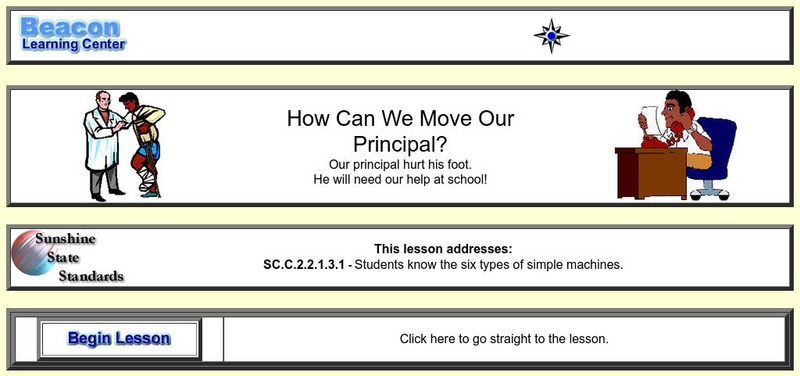

![Ohio State Univ.: Simple Machines & Mechanical Advantage [Pdf] Handout Ohio State Univ.: Simple Machines & Mechanical Advantage [Pdf] Handout](https://static.lp.lexp.cloud/images/attachment_defaults/resource/large/FPO-knovation.png)



